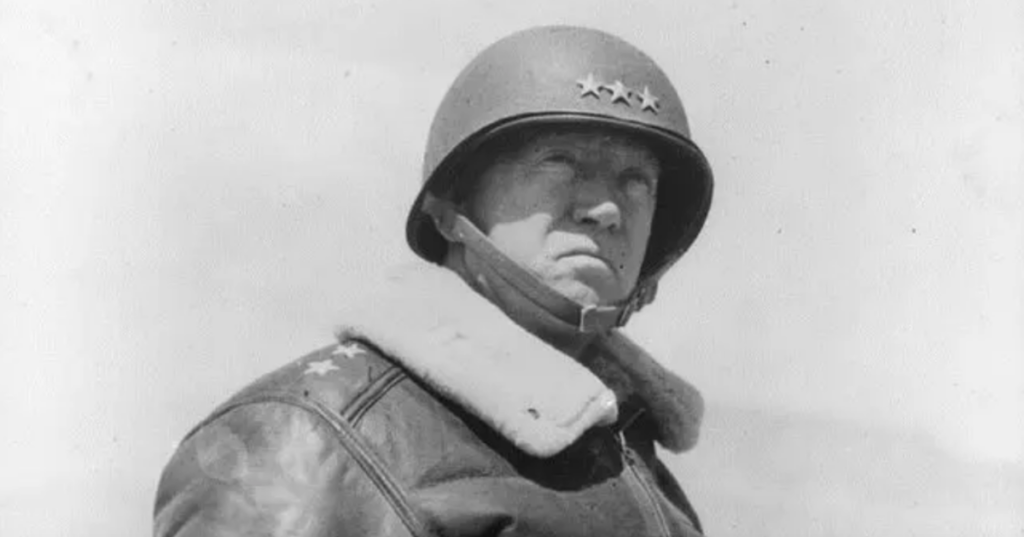
On the winter solstice of December 21, 1945, the world bid farewell to General George S. Patton, a luminary figure whose indelible mark on history remains steadfast.
Emerging into existence within a lineage intricately woven with military heritage in the year 1885, Patton’s journey encompassed the corridors of intellectual and martial prowess, culminating in his triumphant graduation from the revered crucible of knowledge and valor, the U.S. Military Academy at West Point. Embarking upon the tumultuous tides of World War I, Patton’s mettle was tested within the crucible of the Tank Corps, where his synchronized efforts with British tank brigades forged a momentous victory at Cambrai, France—a seminal triumph etched into the annals as the world’s inaugural large-scale tank engagement.
This formative experience etched the contours of Patton’s strategic psyche, bestowing upon him an unwavering reverence for the art of tank warfare. Driven by this ardor, he assumed a role as an architect of progress, engendering the establishment of a training sanctuary for American tank adepts. Not confining himself to mere tactical innovations, he orchestrated the amelioration of inter-tank communication systems, while simultaneously contributing to the evolution of tank armament. Such was the magnitude of his influence that a lineage of tanks was christened in homage to his legacy.
In the wake of the tempestuous maelstrom heralded by the German Blitzkrieg unfurling across Europe in 1941, Patton’s oratory prowess soared to the fore, illuminating the path of courage for America to embrace. His stirring speeches resonated with the spirit of valor, earning him the sobriquet “Old Blood and Guts.” Within the theater of World War II, Patton’s command compass pointed first towards the Western Task Force during the Allies’ incursion into North Africa, before steering the 7th Army towards the shores of Sicily in a calculated offensive.
When the shores of Normandy became a pivotal stage for history’s grand tapestry, General George Patton’s role embodied a duality of purpose. A stratagem of artifice saw him lead the fictitious First United States Army Group under the guise of Operation Fortitude, ensnaring the German gaze and veiling the true intentions of the Normandy offensive. Concurrently, the gravitas of his true assignment lay in the meticulous molding of the Third Army, an entity of substance and steel. The vast expanse of Europe bore witness as Patton’s strategic acumen exploited German frailties, unfurling a march of liberation spanning 600 miles and reclaiming over 81,000 miles of sovereign terrain.
Yet, as the zenith of 1945 adorned December’s horizon, the threads of destiny wove an unexpected chapter. A fateful automobile accident on the 9th of that month marked a crescendo in Patton’s journey. Twelve days later, at the juncture of age 60, his earthly odyssey found its closure.
The annals of history preserve Patton’s legacy as an indomitable pillar of military distinction, his name enshrined among the pantheon of the greatest strategists and commanders to have graced the theater of war.